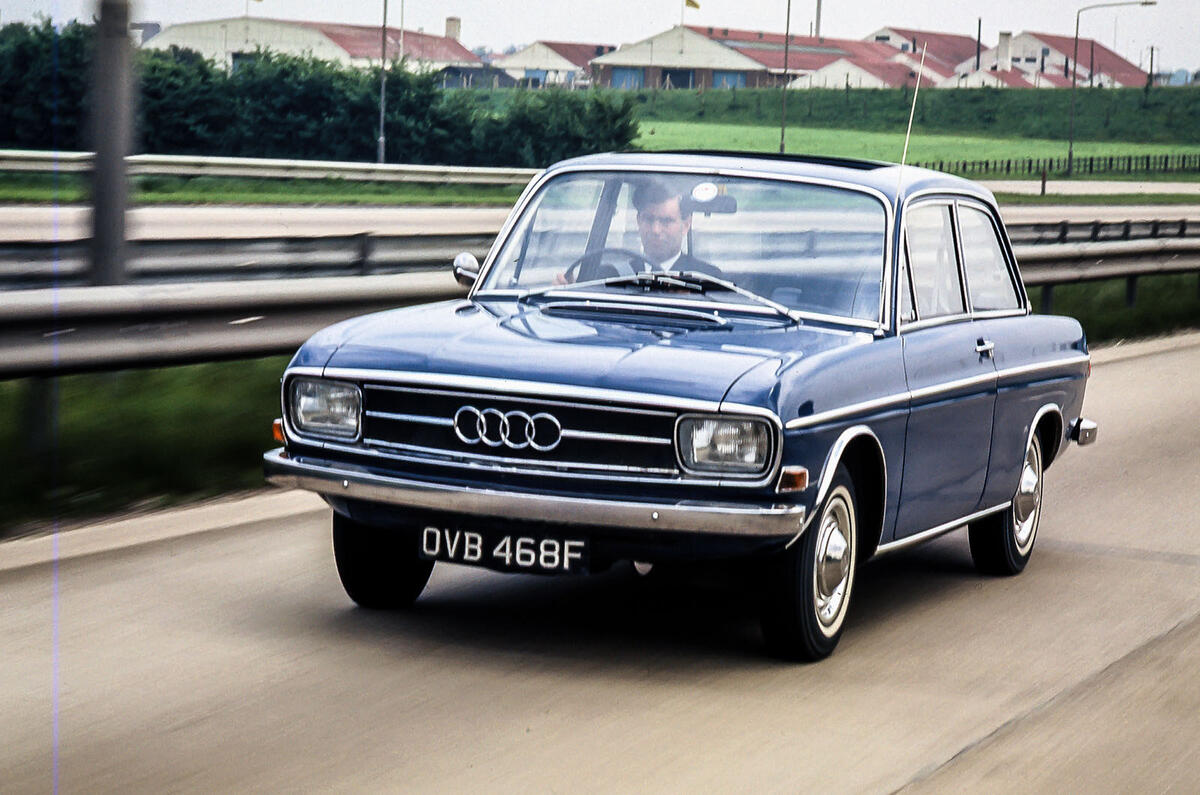During the mid-1960s, ownership of the Auto Union brand gradually shifted from Daimler to Volkswagen, which bought up shares and invested heavily in the Auto Union factory in Ingolstadt.
That plant was producing three-cylinder, two-stroke DKW models, but Volkswagen adopted a plan already put in place by Daimler to create a new family saloon around a 1696cc four-cylinder, four-stroke engine.
Although the saloon used most of the same underpinnings as DKW’s F102, VW wanted to tell the world that this was essentially a new car.
So Wolfsburg looked to the other manufacturer names that had originally comprised Auto Union, namely Audi, Horch and Wanderer. With Horch retained by Daimler and the Wanderer name presumably deemed not exactly ripe for revival, the new car was christened the Auto Union Audi, with ‘Audi’ as a model name rather than a make.
Autocar investigated the new car ahead of its 1966 debut. “Like the original Audi models and, of course, DKW ones as well, the new car features front-wheel drive with an all-synchromesh four-speed gearbox and inboard disc brakes at the front,” said Autocar. “The new engine has been designed and developed by Mercedes-Benz, tested and approved by Volkswagen and will be built by Auto Union.”
Setting a template for future Audis, the engine was “inclined at 40deg and mounted in front of the driven front wheels. A longer nose – the car has an front overhang of 872mm – overcomes the problem of fitting the engine in the front compartment.
“To keep the bonnet line low and particularly the centre of gravity, the engine is canted over at 40deg so that the induction side is on top.”
Intent on giving the Audi a better ride quality than its DKW sibling, Volkswagen focused on developing the suspension. “Double wishbones at the front are sprung by adjustable longitudinal torsion bars, and the telescopic dampers incorporate progressive rubber bump stops.
“Three reasons are given for the inboard brakes: they give less unsprung weight, to improve the suspension; they are not restricted in diameter by the wheel rim size; and there is a direct flow of cooling air through this part of the engine compartment.”
With its new, longer engine, the Audi was about four inches longer than the DKW F102, but otherwise the dimensions were much the same. There were rectangular headlamps and no mesh in the grille, just a surround and the four Auto Union linked rings, one for each of the original four companies.





Join the debate
Add your comment
If only...
Oo, get you.
Mercedes Budget Brand